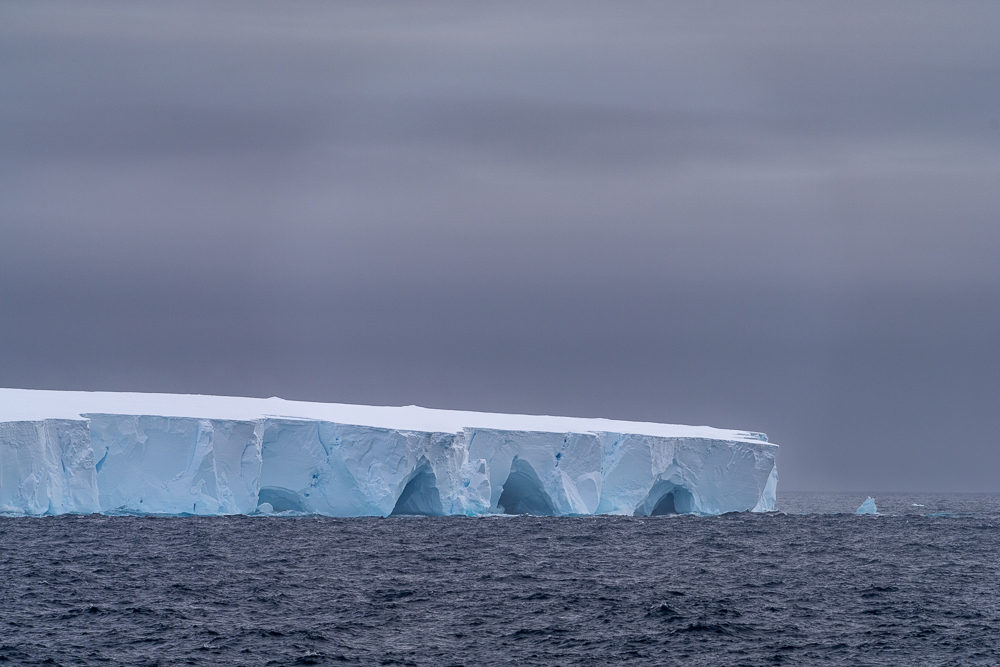Cruising down to Antarctica we had the opportunity to see the largest iceberg in the world., “A23a”.

A23a, a tabular iceberg with a view of a few ice caves
What’s in a name?
Only icebergs greater than 10 nautical miles are named. The name helps identify the specifics of the iceberg. For “A23a,” the “A” designation defines the sector of Antarctica where it originated, the number is the number of icebergs tracked in that area (consecutive and in chronological order), and the sub-letter “a” indicates it is part of the original “A23” which broke into smaller pieces.
How old is it?
Iceberg A23a, traces its roots back to 1986 when it calved off the Filchner Ice Shelf into the Weddell Sea. Grounded for 37 years, it has found its freedom and begun it’s journey to the open seas.
How big is it?
It is estimated to be almost 4000 square miles. This makes it larger than Yellowstone National Park which is 3471 square miles, which in turn is larger than the states of Rhode island and Delaware put together.
It is estimate to be 1000-1200 feet thick or as nearly as thick as the Empire State Building is tall. It is estimated to weight nearly a trillion tons which is more than all of the humans on the planet.
As you might imagine, it’s impossible to capture the size of A23a photographically.

Looking east at the northern end of the iceberg.

Looking east at the southern edge of A23a
Here’s a few close-ups capturing the fissures and ice caves. The birds help provide some perspective. See how many birds you can see.

Waves crashing against the side.

Cape petrels hovering above the sea

Cape petrel soars between us and the iceberg.

Yes, the ice really was this blue.
Although A23a is the largest iceberg, on the planet today, it is not the largest iceberg ever. It will meet the same fate as its predecessors – moving north, melting and breaking up.
A23a, an interesting diversion wouldn’t you agree?


Leave A Comment